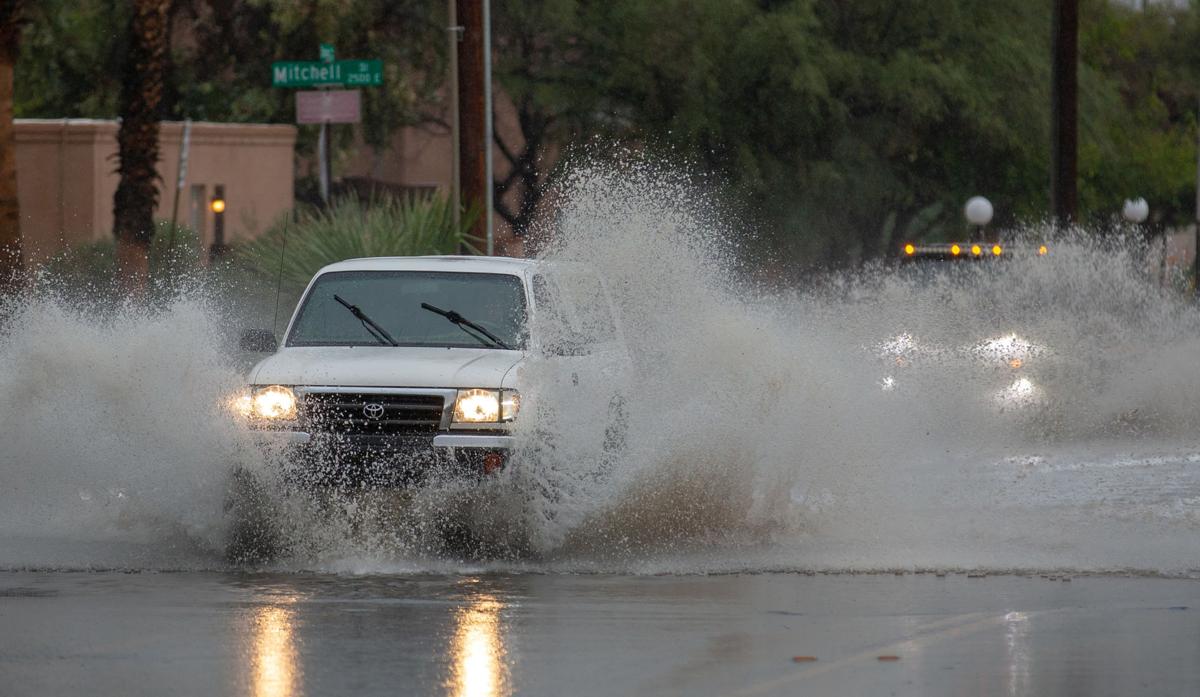While record-breaking extreme heat is prevalent in Tucson now, residents should not forget about the region’s monsoon and the dangers it presents, officials say.
The National Weather Service said the 2021 rainy season could be slightly drier than normal, but it won’t stop the region from instances of flooding, damaging winds, dust storms, hail and lighting.
What’s not expected is a repeat of 2020, which was the warmest and driest monsoon on record since 1895, according the National Weather Service.
The monsoon season officially ends Sept. 30.
The Tucson Department of Transportation and Mobility is also preparing to keep residents safe during heavy monsoon periods with their yearly “Operation Splash” program.
On June 7, the department’s Streets Maintenance Division began delivering barricades to hundreds of dip crossings and washes throughout the city.
“All low-lying areas in the city are subject to flooding during the summer thunderstorm season. The goal of the program is to make sure motorists do not enter flooded roadways,” the department said.
Department staff will be on-call 24 hours a day, seven days a week through mid-September to close any flooding areas with the more than 500 barricades that the maintenance division delivered.
Staff will also be monitoring radar to begin barricading these areas before incoming stormwater arrives.
After the water recedes, the department will evaluate the conditions and remove possible debris before moving barriers aside for motorists.
To help Tucsonans deal with monsoon rain, the department is offering free sandbags for the sixth consecutive year.
The sand will be placed at the Hi Corbett Field east parking lot at Reid Park, 700 S. Randolph Way. It will be open 24 hours a day, seven days a week ahead of the city’s first forecasted storm, the department said.
However, visitors will need their own shovel as it is a self-serve site. There’s also a limit of 10 sandbags per vehicle.
The bags will be available until the operation concludes in mid-September.
Tucsonans have gathered about 115,000 sandbags since 2016 as part of this program, the department said.
For motorists, the National Weather Service says it’s best to take heed to the following best safety practices:
Due to the geographic makeup of our state, the weather can vary dramatically from region to region. When traveling throughout Arizona, pay attention to weather reports, warnings and conditions forecasted for the areas you are traveling through and your final destination.
Don’t underestimate the power of water. Six inches of fast-moving water can knock down an adult, and 18 inches of water can carry away most vehicles. Avoid low water crossings and areas that are already flooded.
Never drive around barricades or attempt to cross streets with flowing water.
If you are caught in a dust storm, pull your vehicle off the roadway, place your vehicle in park, turn off your vehicle’s lights and take your foot off the brake. Remain inside your vehicle with your seatbelt fastened and wait for the storm to pass.
Lightning can strike from 10 miles away and spark fires which spread quickly if accompanied by high winds. If you can hear thunder, lightning is close enough to strike.
If a storm approaches, head indoors or seek shelter and remain indoors for at least 30 minutes after a storm passes before going back outside. If a building isn’t nearby, get inside a vehicle.
Down the RoadOrange Grove Road repairs
Motorists should expect minor delays beginning Monday, June 21, on the following sections of Orange Grove Road:
From Monday to Saturday, June 26, along Orange Grove between East Skyline Drive and North Leonardo da Vinci Way.
On Thursday, June 24, through Friday, June 25, along Orange Grove between North Orange Blossom Lane and North Avenida Manzana.
Crews will work from 6 a.m. and 6 p.m. each day.
Flaggers and law enforcement will be on site to direct and control traffic through the construction zone.





